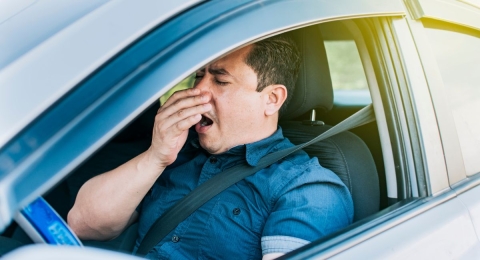Let's explore the common causes of car accidents in school zones and discuss strategies to enhance safety.

- Speeding
One of the most prevalent causes of accidents in school zones is speeding. The posted speed limits in these areas are deliberately reduced to ensure the safety of young pedestrians. Unfortunately, some drivers ignore these speed limits, failing to grasp the importance of maintaining a slower pace in these zones. Speeding reduces a driver's reaction time, making responding quickly to unexpected situations difficult. It also increases the severity of accidents when they do occur. Even a minor collision at high speeds can have devastating consequences in a school zone.
Prevention: Strict enforcement of speed limits in school zones is crucial. Law enforcement officers should patrol these areas regularly to deter speeding. Additionally, prominent and noticeable signage indicating reduced speed limits in school zones can help remind drivers to slow down.
- Distracted Driving
Distracted driving has become a widespread issue on our roads, affecting drivers of all ages. Distracted driving can lead to tragic accidents in school zones, where children may suddenly appear on the road. Common distractions include texting, talking on the phone, adjusting the radio, eating, or daydreaming while behind the wheel.
Prevention: Laws should be strictly enforced to penalize drivers caught using their phones or engaging in other distracting activities while driving. Furthermore, public awareness campaigns and educational programs should emphasize the grave dangers of distracted driving, especially in school zones.
- Failing to Yield
Failing to yield the right of way to pedestrians in crosswalks is another major cause of accidents in school zones. Crosswalks are essential for the safe passage of children across busy streets. When drivers fail to yield as required, accidents can happen.
Prevention: To address this issue, school zones should feature clear road markings, enhanced crosswalk signage, and traffic-calming measures like speed bumps. These measures serve to remind drivers of the importance of yielding to pedestrians. Additionally, strict enforcement of traffic laws and fines for failing to yield can deter this dangerous behavior.
- Reckless Driving
Reckless driving behaviors, including aggressive driving, tailgating, and weaving in and out of traffic, are major contributors to accidents in school zones. Such behavior not only endangers children but also puts other motorists at risk.
Prevention: Increased police presence and traffic enforcement in school zones can deter reckless driving. Public awareness campaigns should educate drivers about the potential consequences of reckless driving and encourage responsible behavior on the road.
- Poor Visibility
Poor visibility, especially during adverse weather conditions or dawn and dusk, can lead to accidents in school zones. Drivers may struggle to see children crossing the road, especially when visibility is limited due to fog, rain, or darkness.
Prevention: Enhancing visibility in school zones is crucial. Measures such as improved lighting and reflective clothing or accessories for children can help increase visibility. School authorities should also consider adjusting school hours to minimize children's exposure to low-light conditions.
- Impaired Driving
Driving under the influence of alcohol or drugs is a reckless behavior that can lead to accidents anywhere, including school zones. Impaired drivers have compromised judgment, slower reaction times, and reduced coordination, making them a significant hazard to children in these areas.
Prevention: Strict enforcement of DUI laws and sobriety checkpoints can help reduce impaired driving in school zones. Educational programs and public awareness campaigns should stress the dangers of driving under the influence and promote designated drivers or alternative transportation options.
- Inadequate School Zone Design
Sometimes, the design of school zones itself can contribute to accidents. Poorly placed crosswalks, inadequate signage, and congested drop-off and pick-up zones can create confusion and increase the likelihood of accidents.
Prevention: To mitigate this issue, school zones should be carefully planned and designed with input from traffic engineers and safety experts. Regular reviews of school zone design can identify and rectify potential issues. The design process should prioritize proper signage, clear pedestrian pathways, and efficient traffic flow.
Car accidents in school zones pose a serious threat to the safety of our children. Understanding and addressing the common causes of these accidents, such as speeding, distracted driving, failing to yield, reckless driving, poor visibility, impaired driving, and inadequate school zone design, are essential to enhancing safety.
Injured? The Office of Brandon J. Broderick, Car Accident Lawyers, Can Help
If the unfortunate happens and you’ve been injured in a car accident, don’t go it alone. An experienced car accident lawyer can advocate for your best interest and pursue fair compensation for your damages. At Brandon J. Broderick, Attorney at Law, you can count on us to work tirelessly for your quality of life. Our long track record of success has helped people like you move forward after sustaining an injury caused by another’s negligence.
Locations in New Jersey, New York, Pennsylvania, Connecticut and Vermont.
Contact us now for a free legal review.